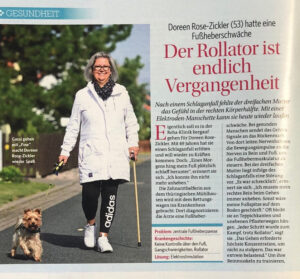
Electric cuff helps with foot drop paresis
“The rollator is a thing of the past.” After a stroke, slipped disc or traumatic brain injury, nerve damage can also lead to a loss of control when moving the foot. Those affected can then barely lift their foot, which leads to considerable limitations. Functional electrical stimulation (FES) helps to regain mobility.





